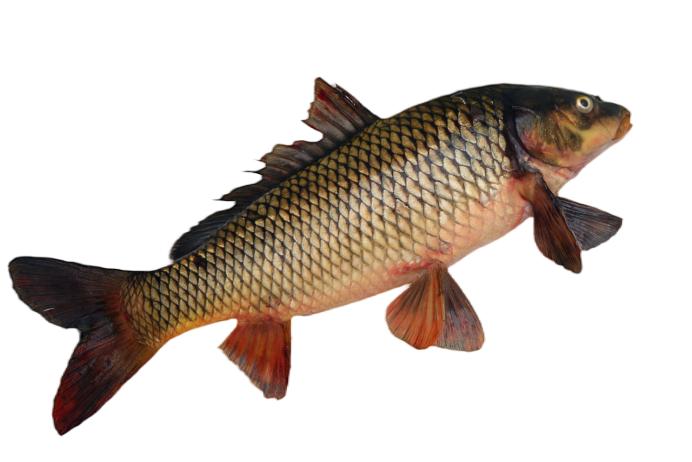Brief summary:
1. Cholic acid inhibits the replication of SVCV at the cellular level.
2. Cholic acid increased the survival rate of zebrafish infected with SVCV by 40% and alleviated tissue damage.
3. Cholic acid may exert antiviral effects by promoting the synthesis of polyunsaturated fatty acids.

Abstract:
Spring Viremia of Carp Virus (SVCV) is a highly pathogenic pathogen that infects carp, often leading to severe inflammatory reactions in infected fish. This viral infection is extremely lethal to carp larvae, and the symptoms of affected fish include slow swimming and reduced excitability. Pathological changes include internal bleeding, peritonitis, and visceral spotting (Teng et al., 2007), with a mortality rate of over 70% (Liuetal., 2015), often resulting in severe economic losses.
Bile acids, as a new type of feed additive, play a crucial role in the body's functions, including promoting the digestion and absorption of fats and fat soluble substances, maintaining the dynamic balance of cholesterol, sterilizing and anti-inflammatory, and enhancing animal immunity. Moderate addition of bile acids can not only improve the production performance and fat metabolism of livestock, poultry, and aquatic animals, but also increase feed utilization and reduce feeding costs (Liet et al., 2020; Wang et al., 2024; Abdel Tawwab et al., 2023). In addition, the addition of bile acids can affect the absorption and utilization of fatty acids. For example, adding 60 and 90 mg/kg bile acids to the diet of laying hens can upregulate fatty acid degradation and unsaturated fatty acid biosynthesis (Yang et al., 2022). Feeding juvenile yellow croaker (Larimichthys crocea) with a diet containing 300mg/kg bile acids significantly increased the ratio of docosahexaenoic acid (DHA) to eicosapentaenoic acid (EPA) in the muscles (Ding et al., 2020). Adding bile acids to the diet of Plectropomus downregulated the expression of rate limiting enzymes FASN and ACACA encoding fatty acid biosynthesis, and promoted intestinal fatty acid absorption (Gao et al., 2023).
Cholic acid (CA) is an essential bile acid type synthesized directly from cholesterol in the liver (Kim and Chang, 2011), which has the effects of promoting lipolysis and absorption, regulating metabolism, anti-inflammatory, and antibacterial (Chen et al., 2019); Ge et al., 2019). CA derivatives, as effective antibacterial agents, can inhibit the formation of fungal biofilms and achieve antibiotic free sterilization of Candida albicans (Gupta et al., 2021). In addition, antiviral studies have shown that CA can inhibit Coxsackievirus B3 (CVB3) infection and limit endoplasmic reticulum stress and ERK signaling in infected cells (Han et al., 2018). Adding bile acids to drinking water in advance can reduce the viral load in the lungs of mice infected with influenza virus and decrease the mortality rate of mice (Nagai et al., 2023). Adding bile acids or chenodeoxycholic acid (CDCA) to a high-fat diet promoted fat absorption in experimental mice and limited the development of obesity (Ippagunta et al., 2018). Bile acids play an important role in regulating metabolism, antibacterial and antiviral activity, but little is known about their antiviral effects on aquatic animal pathogens.
Cholic acid (CA) is a primary bile acid synthesized directly from cholesterol in the liver and has been found to have inhibitory effects on viral infections. To confirm the antiviral potential of this, 500 μ M tests were conducted on SVCV replicates in vitro, and bile acid showed a significant inhibitory effect on virus replication. Further experimental tests have shown that CA has antiviral effects during the replication phase, but has no effect during the virus adsorption and invasion phases. In vivo experiments have shown that CA increases the survival rate of zebrafish infected with SVCV by 40%, reduces viral load in tissues, and minimizes histopathological damage. Comparing the transcriptomes of zebrafish liver between the CA treatment group and the control group (NC), it was found that CA treatment can promote the synthesis of polyunsaturated fatty acids, with the most significant change observed in docosahexaenoic acid (DHA). The inhibition test of polyunsaturated fatty acid dehydrogenase 2 (Fads2) showed that the inhibitory effect of CA on SVCV disappeared. These new findings suggest that CA may exert antiviral effects by regulating the synthesis of polyunsaturated fatty acids. In addition, this study also validated the antiviral activity of DHA against SVCV. In summary, CA, as a potential anti SVCV drug or feed additive, may help alleviate the outbreak of SVCV in aquaculture.

The Original:Cholic acid-based inhibition of SVCV replication by modulating polyunsaturated fatty acid content
Author:Yu Y, Zhang Y, Hua X, et al.
Link:https://doi.org/10.1016/j.aquaculture.2024.741712
Note: Reproduction is only for sharing and for the purpose of learning and communication. If there is any infringement, please contact us for deletion.